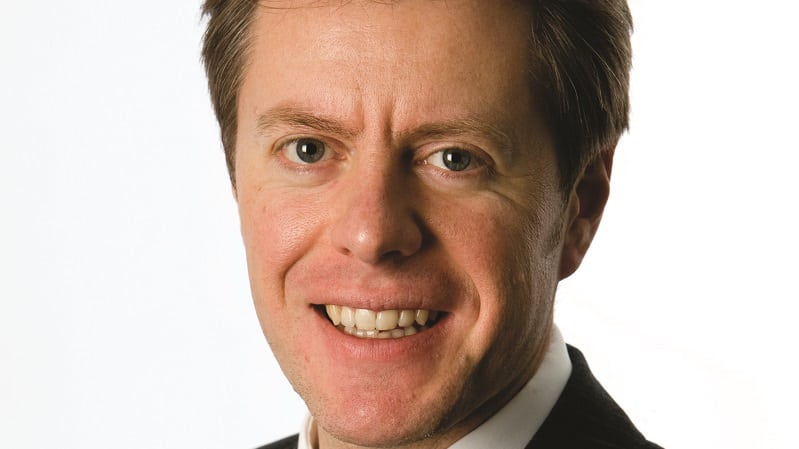Income has been a thorny issue for more than a decade. The challenge of generating an income on investment portfolios is likely to remain as long as policymakers employ extraordinary monetary policy to support economic growth.
Today, investors also have to contend with inflation. The recent Square Mile Investment Conference brought together three fund managers to discuss the challenges for income investors today.
Investors have become familiar with the ‘reach’ for income: having to take higher and higher risks to achieve the same level of income. Nevertheless, all three fund managers – Ajay Dayal, investment director at Franklin Templeton, Jason Pidcock (pictured), manager of the Jupiter Asian Income fund and Chris Murphy, manager of the Aviva Investors UK Listed Equity Income fund – said an income of more than 3% was realistic and sustainable in today’s environment.
Pidcock said that a portfolio yield of 3-4% was a reasonable target and at that level investors could be confident of dividend growth as well. Dayal pitched his target slightly higher, saying that in listed infrastructure, companies are often growing dividends at 4-6%, with yields of 4-5%. Murphy says that the UK market has reformed during the Covid crisis, with many of the bigger multinational companies no longer over-distributing. However, he adds that active management and ESG are increasingly important in this area.
Why income still matters in a growth world
In spite of these relatively attractive income levels, there is an increasing school of thought that suggests investors should just invest for growth, rather than focusing on income. This is a reflection of the investing climate of the past decade, when loose monetary policy has favoured a handful of high growth stocks, with the performance of many income investments lacklustre in comparison.
Pidcock believes there is still a strong argument in favour of an income approach.
“When picking stocks, it’s an important discipline for companies to have a strong enough balance sheet that they’re able to pay back their investors… Also, if a company is good value – trading at a PE discount to the wider market – the way that an investor can realise value over time is through those dividend payments,” he says. “If a company doesn’t have a yield, an investor may never close that gap. With an income approach, an investor gets money back via the dividends, rather than relying on the share price re-rating.”
Murphy says that there has been a lot of focus on those companies that create technology, rather than those that benefit from technology. Income investing is a way not to be sucked into the glamour and excitement (and high valuations) for technology companies.
Dayal says that for infrastructure investment, income is around 60% of the total return to investors, even in growth markets such as the US. He believes there is no trade-off between income and capital investment. “Infrastructure companies are still growing and moving forward, while also growing their dividends. This is a multi-decade trend and there is plenty more to come.”
Addressing the income and ESG dilemma
A perennial problem for income investors has been that the strongest dividend payers are those that on the wrong side of environmental trends. Murphy admits that this is a particular problem in the UK market.
He says: “The ‘sinners’ that really stand out are the oil majors. The oil majors are paying lip-service to where they need to be in terms of transition to a carbon-neutral world. These companies are massively under-investing. It is about active management and thinking outside the box.
“For other businesses, we need to recognise the scale of investment required on ESG. Certainly, for some companies the transition will require a swath of investment and probably cutting back on dividend growth.”
Dayal is confident that many of the infrastructure companies in which he invests are on the right side of this trend. Renewable energy will need to be stored and distributed, for example. He is confident that companies will get paid on their asset base.
Pidcock’s view is more fatalistic: “Are oil companies really sinners? All of us use their products every single day and we couldn’t get by without them. There is a world of green-washing… As far as the ‘E’ in ESG is concerned, I think we’re already into an ecological crisis and I believe most attempts to prevent it are futile. We are dealing with this by investing in those countries that are least impacted by this growing ecological crisis. Countries that will be relatively immune, that continue to attract inward migration and have industrious workforces include Australia, Singapore and New Zealand.”
Moving on from 2020’s woes
All three managers see a vastly better environment for dividends this year than last year. Pidcock says that many of companies in his portfolio have strong balance sheets and therefore had no trouble getting through the crisis, but many cut dividends anyway, either out of prudence or obligation. This is starting to go back to normal now. He believes that investors are starting to look for more surety and less speculation: “People want companies with strong balance sheets,” he adds.
After a dismal few years for income strategies, 2021 is likely to be stronger. They may find favour as investors look for inflation protection and the resilience that comes with a strong balance sheet. However, investors will still need to be wary of relying on dividend strategies that fall foul of ESG criteria.






